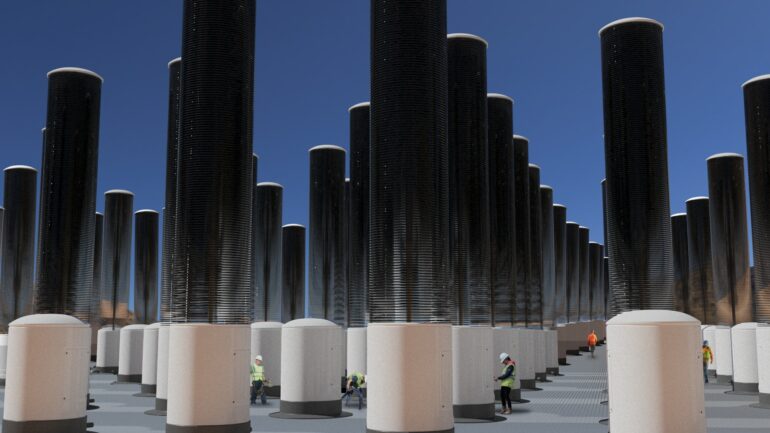Two centuries of burning fossil fuels has put more carbon dioxide, a powerful greenhouse gas, into the atmosphere than nature can remove. As that CO2 builds up, it traps excess heat near Earth’s surface, causing global warming. There is so much CO2 in the atmosphere now that most scenarios show ending emissions alone won’t be enough to stabilize the climate – humanity will also have to remove CO2 from the air.
The U.S. Department of Energy has a new goal to scale up direct air capture, a technology that uses chemical reactions to capture CO2 from air. While federal funding for carbon capture often draws criticism because some people see it as an excuse for fossil fuel use to continue, carbon removal in some form will likely still be necessary, IPCC reports show. Technology to remove carbon mechanically is in development and operating at a very small scale, in part because current methods are prohibitively expensive and energy intensive. But new techniques are being tested this year that could help lower the energy demand and cost.
We asked Arizona State University Professor Klaus Lackner, a pioneer in direct air capture and carbon storage, about the state of the technology and where it’s headed.
What is direct carbon removal and why is it considered necessary?
When I got interested in carbon management in the early 1990s, what drove me was the observation that carbon piles up in the environment. It takes nature thousands of years to remove that CO2, and we’re on a trajectory toward much higher CO2 concentrations, well beyond anything humans have experienced.
Humanity can’t afford to have increasing amounts of excess carbon floating around in the environment, so we have to get it back out.
Not all emissions are from large sources, like power plants or factories, where we can capture CO2 as it comes out. So we need to deal with the other half of emissions – from cars, planes, taking a hot shower while your gas furnace is putting out CO2. That means pulling CO2 out of the air.
How direct air capture works.
Since CO2 mixes quickly in the air, it doesn’t matter where in the world the CO2 is removed – the removal has the same impact. So we can place direct air capture technology right where we plan to use or store the CO2.
The method of storage is also important. Storing CO2 for just 60 years or 100 years isn’t good enough. If 100 years from now all that carbon is back in the environment, all we did was take care of ourselves, and our grandkids have to figure it out again. In the meantime, the world’s energy consumption is growing at about 2% per year.
One of the complaints about direct air capture, in addition to the cost, is that it’s energy intensive. Can that energy use be reduced?
Two large energy uses in direct air capture are running fans to draw in air and then heating to extract the CO2. There are ways to reduce energy demand for…
